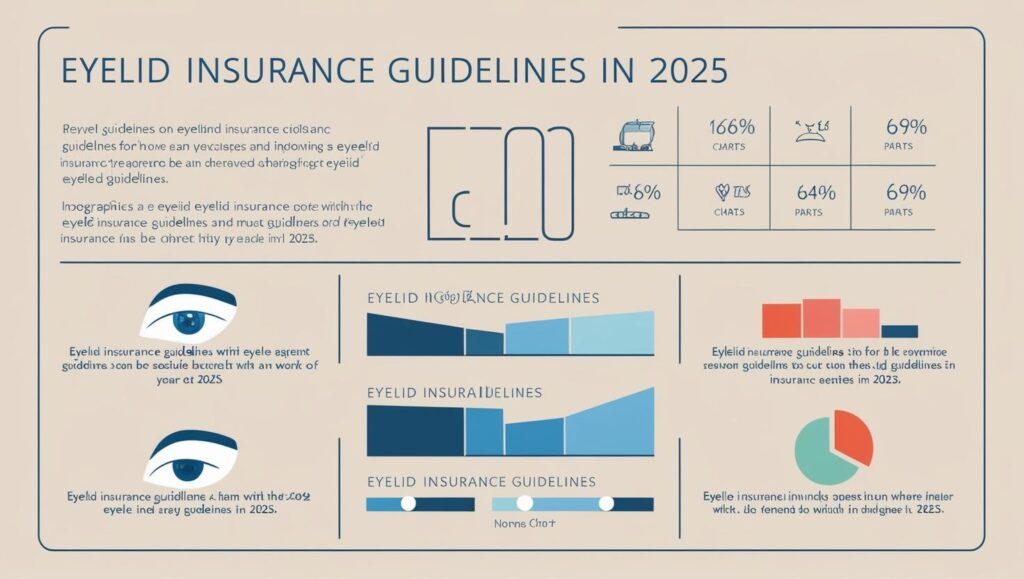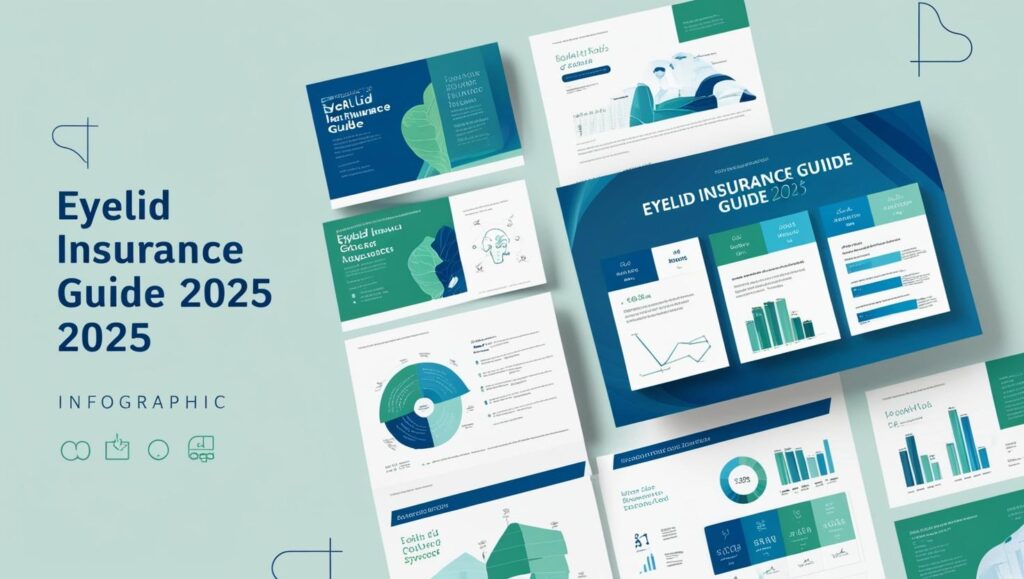Understanding Insurance Coverage for Eyelid Surgery
When researching images of eyelid surgery covered by insurance, it’s important to understand the distinction between cosmetic and medically necessary procedures. Insurance companies typically only cover eyelid surgery (blepharoplasty) when there’s documented evidence that excess eyelid skin obstructs vision.
The visual difference between cosmetic and medically necessary procedures can be subtle in photographs, but insurance companies focus on functional impairment rather than aesthetic improvement.
Medical Necessity Requirements
For eyelid surgery to be covered by insurance, patients must demonstrate:
- Visual field obstruction documented by specialized tests
- Drooping eyelids that interfere with daily activities
- Symptoms like eyestrain, headaches, or fatigue from compensatory behaviors
- Photographic evidence showing significant upper eyelid drooping
Images of eyelid surgery covered by insurance typically show more severe drooping compared to cosmetic cases, with the excess skin clearly resting on the eyelashes or obstructing the pupil.
Before and After Images of Covered Procedures
Insurance-covered blepharoplasty before and after photos demonstrate functional improvement rather than just aesthetic enhancement. These images of eyelid surgery covered by insurance typically show:
Characteristics of Covered Procedure Images:
- Upper eyelid skin hanging over the eyelid margin
- Visible obstruction of the visual field
- Asymmetry caused by muscle weakness (ptosis)
- Eyelid position sitting at or below the pupil

“The key difference between cosmetic and medically necessary blepharoplasty is whether the condition impairs function, not just appearance.” – Dr. James Wilson, Oculoplastic Surgeon
Documentation Required for Insurance Approval
To support images of eyelid surgery covered by insurance, patients must provide comprehensive documentation:
- Clinical Photographs: Clear images showing eyelid drooping in various positions
- Visual Field Testing: Documentation of upper peripheral vision loss
- Ophthalmologist’s Statement: Professional assessment of functional impairment
- Medical History: Related symptoms and failed conservative treatments
Learn more about insurance documentation requirements at the American Academy of Ophthalmology
Insurance Company Policies
Different insurance providers have varying requirements regarding images of eyelid surgery covered by insurance:
| Insurance Provider | Photography Requirements | Additional Documentation |
|---|---|---|
| Medicare | Frontal photos showing skin resting on lashes | Visual field test mandatory |
| Blue Cross Blue Shield | Multiple angles showing obstructed vision | Minimum 30° visual field reduction |
| Aetna | Digital measurements of obstruction | Taped and untaped comparison |
| United Healthcare | Standard frontal, lateral, and 45° angle | Documented daily activity limitations |
| Cigna | High-resolution images with measurement scale | Visual field test with and without tape |
The Visual Field Test

The visual field test is crucial for insurance approval and often accompanies images of eyelid surgery covered by insurance:
How the Test Works:
- Testing is performed with eyelids in natural position
- The test is repeated with eyelids taped up
- The difference between tests quantifies vision improvement
- Most insurers require at least 30% improvement when eyelids are taped
Appeals Process
If your insurance denies coverage despite providing images of eyelid surgery covered by insurance, you have options:
Steps for Appeal:
- Request detailed denial reason: Understand exactly why coverage was denied
- Additional documentation: Obtain more comprehensive visual field testing
- Better photography: Ensure images clearly demonstrate functional impairment
- Specialist statements: Get supporting letters from multiple specialists
- Peer-to-peer review: Have your surgeon speak directly with insurance reviewers
Review the insurance appeals process at the Patient Advocate Foundation
Success Stories
Many patients have successfully obtained coverage by properly documenting their condition:
Case Study: Margaret’s Medicare Coverage
Margaret, 67, experienced severe upper eyelid drooping that limited her peripheral vision. Her ophthalmologist provided detailed images of eyelid surgery covered by insurance that clearly showed how her excess eyelid skin rested on her eyelashes and obstructed her vision. Combined with a visual field test showing 40% improvement with taped eyelids, Medicare approved her procedure.
Case Study: Robert’s Appeal Victory
After initial denial, Robert submitted additional images of eyelid surgery covered by insurance showing his eyelid position in different lighting conditions and when performing daily activities. These images, combined with a second visual field test and a detailed letter from his ophthalmologist, resulted in successful coverage approval.
FAQs
Q: Do insurance companies cover lower eyelid surgery?
A: Lower eyelid blepharoplasty is rarely covered by insurance as it typically doesn’t affect vision. Images of eyelid surgery covered by insurance almost always show upper eyelid procedures.
Q: What CPT codes are used for insurance-covered eyelid surgery?
A: Insurance-covered blepharoplasty typically uses CPT codes 15822 (upper eyelid blepharoplasty) and 67904 (repair of blepharoptosis).
Q: How do I know if my eyelid surgery might be covered by insurance?
A: If your upper eyelid skin rests on your eyelashes, causes vision obstruction, or requires you to tilt your head back to see clearly, you may qualify. Consult an oculoplastic surgeon for an evaluation and proper documentation including images of eyelid surgery covered by insurance.
Q: Will insurance cover eyelid surgery for both eyes?
A: If both eyes meet the medical necessity criteria, insurance will typically cover both. However, some patients may have only one eye that qualifies based on the degree of obstruction shown in their images of eyelid surgery covered by insurance.
Q: How long does insurance approval for eyelid surgery usually take?
A: After submission of all required documentation including images of eyelid surgery covered by insurance, approval typically takes 2-6 weeks depending on the insurance provider.
Conclusion
Obtaining insurance coverage for eyelid surgery requires thorough documentation, proper medical imaging, and demonstration of functional impairment. Understanding what insurance companies look for in images of eyelid surgery covered by insurance can significantly improve your chances of approval.
If you’re experiencing vision obstruction due to drooping eyelids, consult with an oculoplastic surgeon who has experience with insurance-covered procedures. They can provide guidance on documentation requirements and help you navigate the sometimes complex insurance approval process.
Read More: Mycotoxin Testing Insurance Coverage
This guide about images of eyelid surgery covered by insurance was last updated: April 2025
